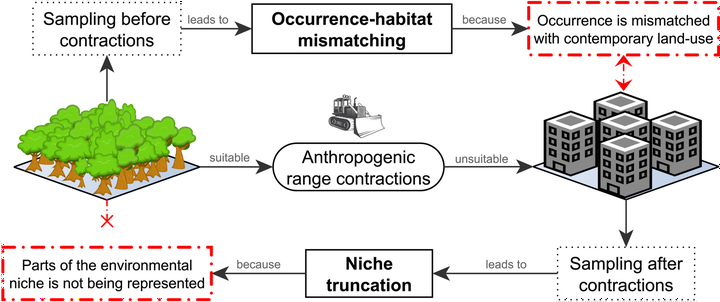Occurrence–habitat mismatching and niche truncation when modelling distributions affected by anthropogenic range contractions
 Concept chart illustrating the processes through which differential sampling across time, relative to when anthropogenic range contraction had occurred, can lead to occurrence–habitat mismatching or niche truncation within an occurrence dataset.
Concept chart illustrating the processes through which differential sampling across time, relative to when anthropogenic range contraction had occurred, can lead to occurrence–habitat mismatching or niche truncation within an occurrence dataset.
Abstract
Human-induced pressures such as deforestation cause anthropogenic range contractions (ARCs). Such contractions present dynamic distributions that may engender data misrepresentations within species distribution models. The temporal bias of occurrence data—where occurrences represent distributions before (past bias) or after (recent bias) ARCs—underpins these data misrepresentations. Occurrence–habitat mismatching results when occurrences sampled before contractions are modelled with contemporary anthropogenic variables; niche truncation results when occurrences sampled after contractions are modelled without anthropogenic variables. Our understanding of their independent and interactive effects on model performance remains incomplete but is vital for developing good modelling protocols. Through a virtual ecologist approach, we demonstrate how these data misrepresentations manifest and investigate their effects on model performance.